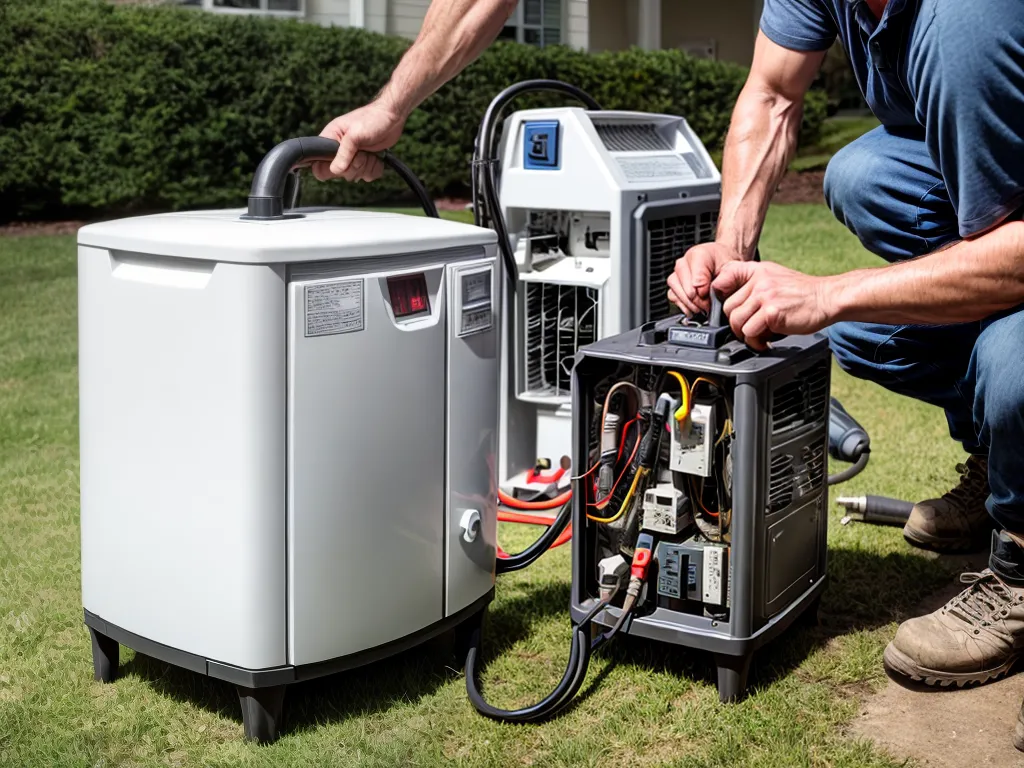
How to Install Your Own Backup Generator Without an Electrician
Having a backup generator to provide power during an outage can give you peace of mind and keep your home comfortable. While hiring an electrician to install a generator is always the safest option, with the right preparation, you can install your own backup generator without professional help. Here is a step-by-step guide on how to do it safely and properly.
Research Generator Types and Choose One for Your Needs
The first step is to understand the different types of generators available and select one suitable for your home's power requirements. The three main types are:
Portable Generators
- Portable generators are lightweight and easy to move around.
- They can provide power between 1,000 to 10,000 watts.
- Best for temporary backup power like during short outages.
- Not suitable for whole home backup as limited wattage.
Standby Generators
- Permanently installed outside the home.
- Automatically turn on when power goes out.
- Provide backup power to whole home or selected circuits.
- Require professional installation but DIY is possible with proper skills.
Inverter Generators
- Produce clean sine wave power safe for sensitive electronics.
- Make less noise and are more fuel-efficient.
- More expensive but worth it for whole home backup.
For whole home backup, a standby generator of appropriate wattage is the best choice. Get one 20% higher than your calculated home power needs.
Calculate Your Home's Power Requirements
- Determine the wattage of all essential appliances and devices you want to run during an outage.
- Add up the starting and running wattage of each item for total home power needs.
- Critical items may include fridge, freezer, lights, furnace, medical devices, etc.
- As a rule of thumb - 5000W for 1-2 bedroom homes, 7000W for 3 bedrooms, 10000W for large 4+ bedroom homes.
Choose a Suitable Outdoor Location
- Pick an outdoor location at least 15 ft from the home with good airflow.
- The location should be clean, dry, and protected from weather elements.
- Allow sufficient access for generator maintenance.
- Ensure exhaust can vent safely away from windows and doors.
Get Proper Permits and Inspections
- Most areas require permits and inspections for generator installs.
- Contact your local building department for permit application and process.
- You may need separate permits for mechanical, electrical, and plumbing aspects.
- Passing inspections ensure your generator is safely and properly installed.
Install a Concrete Base
- The generator requires a level concrete slab base as its foundation.
- The base should be larger than the generator footprint.
- Build a form with lumber and place bolts in the concrete to anchor generator.
- Allow the slab to cure completely as per concrete mix instructions before generator install.
Connect Fuel Supply Line
- For gas generators, run buried gas supply line from house to generator slab.
- Use code-approved pipe. Have line pressure tested before generator hook up.
- For diesel, install above-ground, double walled tank with foundation. Run fuel line from tank to generator.
- Install shut off valve close to generator for easier maintenance.
Connect Generator to Electrical Panel
- Critical safety step - isolate home circuits from utility with approved transfer switch.
- Run wires from generator to transfer switch in conduit.
- Connect to essential home circuits per your calculated load via transfer switch.
- DO NOT connect generator directly to home electrical panel. This can backfeed and electrocute workers.
Test Generator and Do Final Inspections
- Test run the generator and make sure automatic transfer switch works properly.
- Verify it powers all required home circuits and devices without issue.
- Get final inspections done by the building department to approve your install.
- Correct any issues noted before using the generator.
With research, careful planning, permits, and attention to safety, installing your own backup generator is a DIY project you can certainly take on. But working with electricity and fuel lines can be hazardous. If unsure, hire a licensed electrician and plumber to ensure it is done safely and correctly.